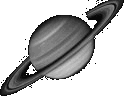
Astrophotography Forum Message | |
| Forums: |
Atm ·
Astrophotography ·
Blackholes ·
Blackholes2 ·
CCD ·
Celestron ·
Domes ·
Education
Eyepieces · Meade · Misc. · God and Science · SETI · Software · UFO · XEphem |

 |
|
 |
||||
|
|
||||||
Be the first pioneers to continue the Astronomy Discussions at our new Astronomy meeting place... The Space and Astronomy Agora |
| Exposure Latitude Can Explain This
Forum List | Follow Ups | Post Message | Back to Thread Topics | In Response To Posted by Kip Crawford on July 24, 2001 22:22:28 UTC |
You can also think of it this way: Because we astrophotographers rely on dark skies for good night shots, being in space or the bright side of the moon would be the reverse situation because of light saturation of sunlight. If by chance there were many stars in these moon shots or orbital shots, then I would suspect "foul play". Even when I take lunar pics, I never capture star light. On my digital camera, there are times where I will get a hint of a bright star nearby. But this is rare. Basically, any NASA pics of shuttle missions or the old Apollo lunar mission taken in any type sunlight will not show stars. However a over-exposure might do that, but it would wash out the subjects. Hubble Telescope also has to do long exposures and it sits on the dark side of the earth to eliminate "solar" pollution. This is why Hubble's targets are seasonal. |
|
|
| Additional Information |
|---|
| About Astronomy Net | Advertise on Astronomy Net | Contact & Comments | Privacy Policy |
|
Unless otherwise specified, web site content Copyright 1994-2024 John Huggins All Rights Reserved Forum posts are Copyright their authors as specified in the heading above the post. "dbHTML," "AstroGuide," "ASTRONOMY.NET" & "VA.NET" are trademarks of John Huggins |